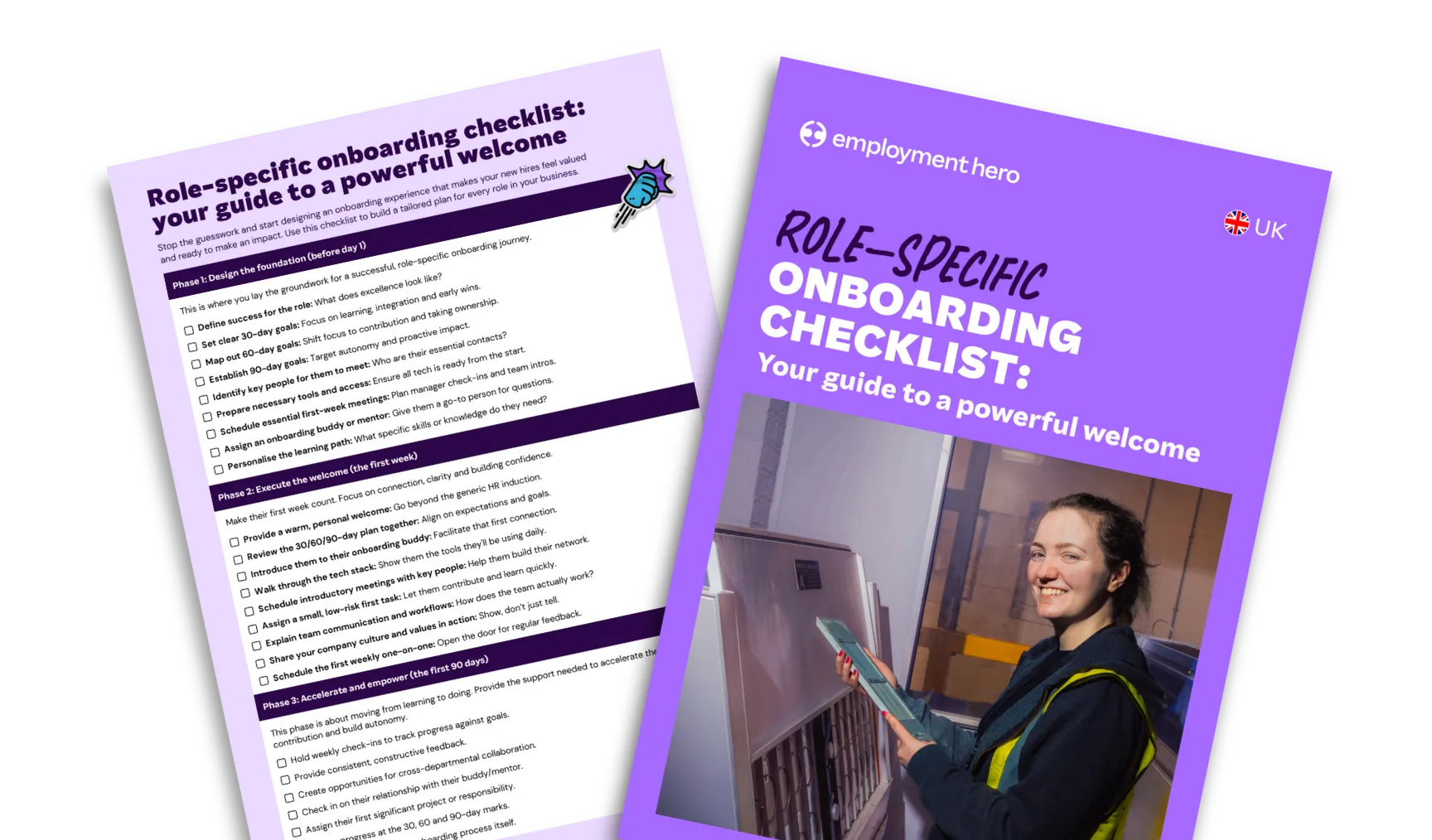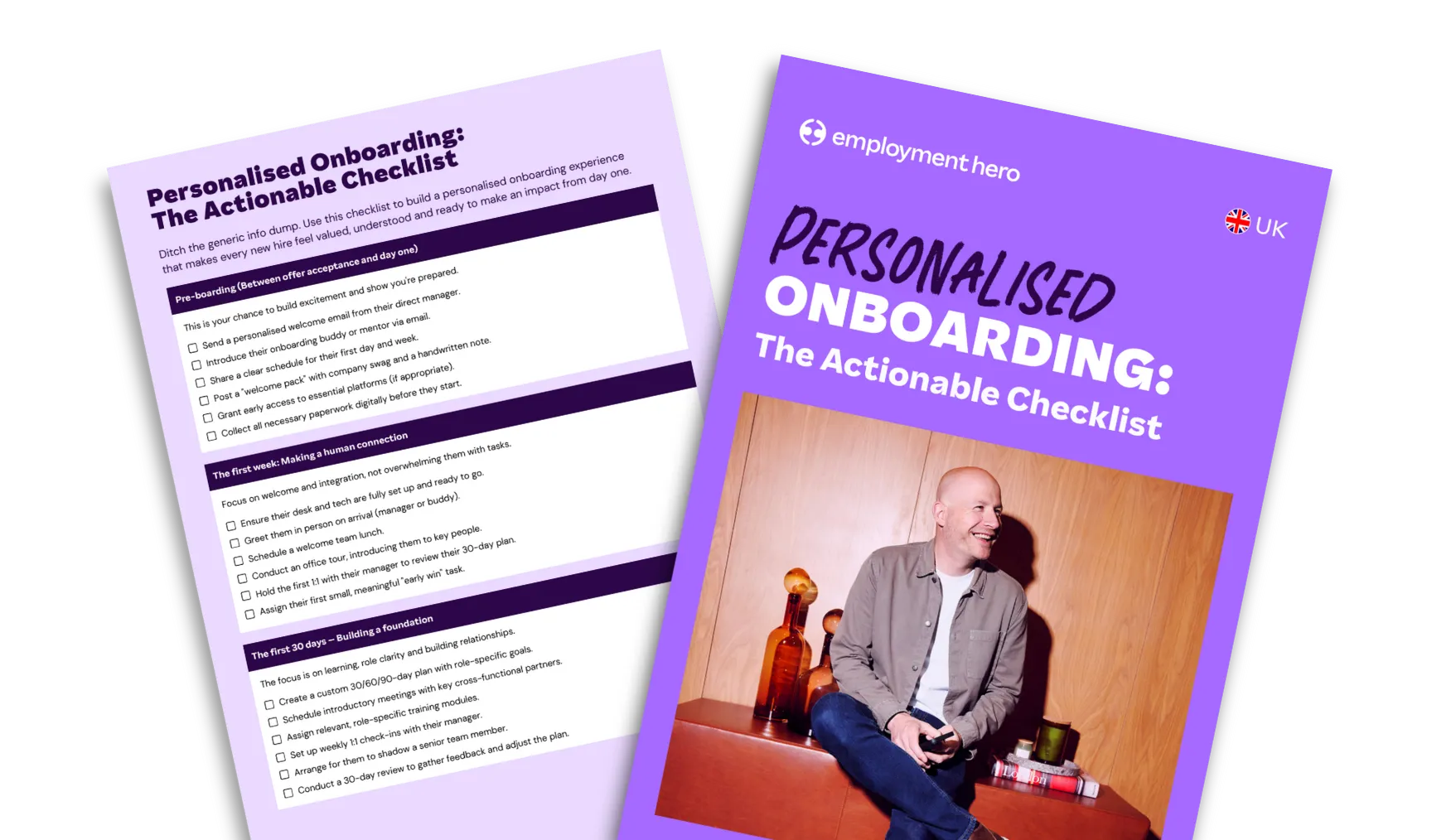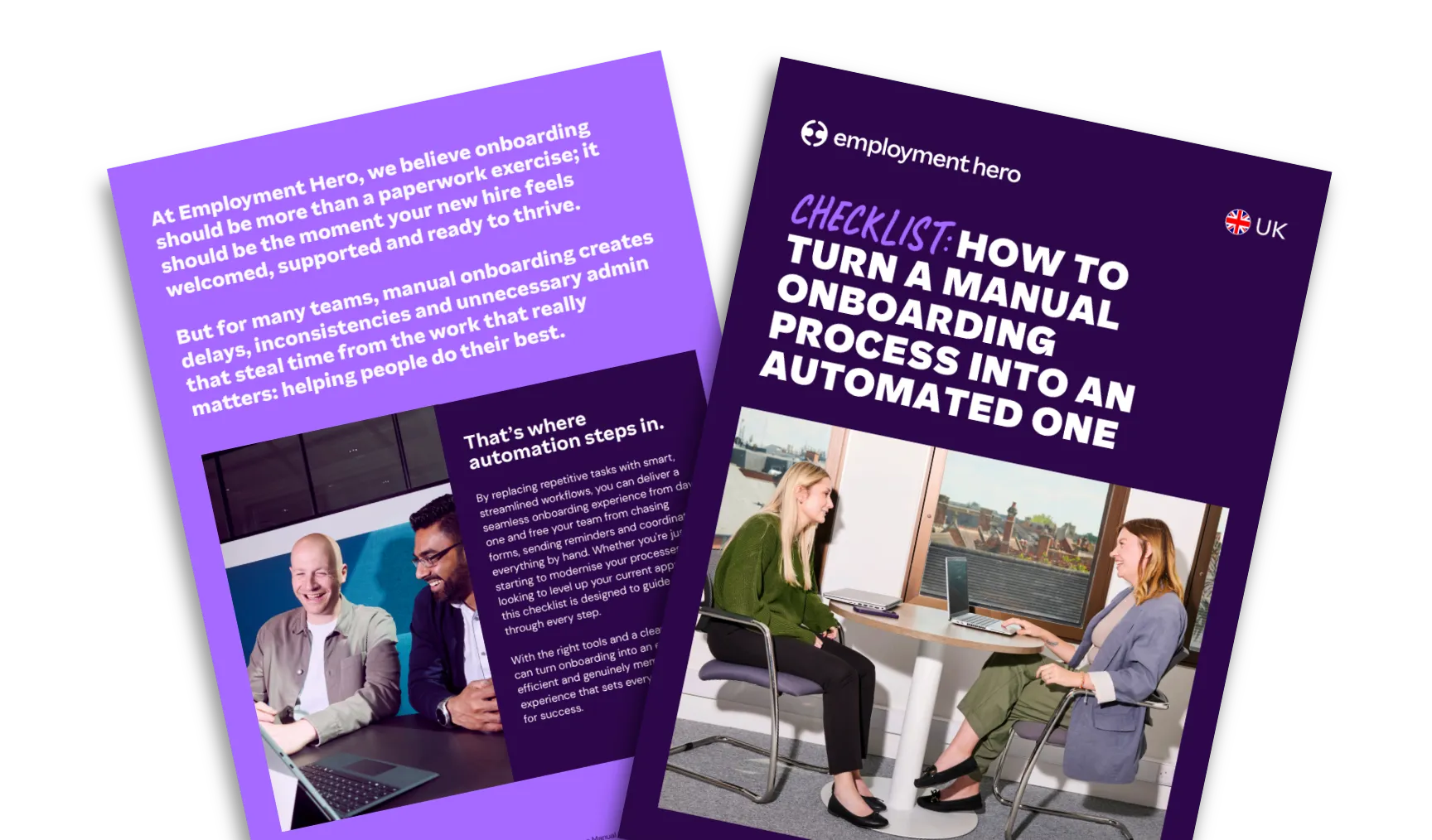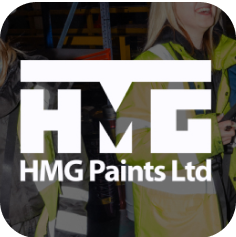Employee Induction Checklist
Published
Employee Induction Checklist
Last Updated
1 min read
Starting a new job is an important moment, for both the new starter and the business. For business owners, leaders and HR managers it’s an opportunity to welcome your newest team member and make sure they are empowered to hit the ground running. This is where induction checklists and onboarding processes come into play.
This resource outlines everything business owners, leaders and HR managers need to create an impactful and successful induction plan. Whether your team functions via remote working, hybrid or in-office, this checklist ensures no detail is missed, so you can focus on what matters most: helping your people thrive.
What is an induction process?
An induction process is where the new employee does the bulk of their learning about the business and their role within it. It’s generally a learning process, where the employee is taught about the company by those inside the company (building on any information they may have learned during recruitment). It’s also a chance to share insider information about goals and plans to help the employee prepare ahead. It can also include the sharing of information about company policies, team structure and a person’s role.
What’s included in the induction checklist
This induction checklist covers every important step of the process, starting before your newest hire even walks through the door and well into their first month on the job. Here’s a breakdown of what’s included:
- Pre-induction Setup
- Day one essentials
- Week one integration
- First month milestones
Download the free induction checklist now.
Why every business needs an induction checklist
An employee induction checklist shouldn’t be considered as a “nice to have”. It’s a vital part of building a consistent and professional experience. Here’s why every business needs one:
Prevents things falling through the cracks
One of the biggest concerns when it comes to ad-hoc processes is that too much is left to chance and oftentimes things get forgotten. The last thing you want is for your new starter to not have the equipment or logins they need to dive into their new role.
Having an employee induction checklist ensures every task is accounted for, creating a solid process that leaves no room for oversight. It helps HR teams, managers and IT stay aligned and gives clear expectations about what is needed from all parties to make the process smooth and successful.
Improves Compliance
For businesses, being compliant is not a non-negotiable, it’s essential. A structured induction plan ensures your business is meeting all legal and regulatory obligations by tracking completed documents, policy acknowledgements and essential training modules.
With the right tools in place, you can automate important reminders and maintain a clear audit trail, protecting both your employees and your organisation.
Builds new hire confidence
First impressions count, even at work. So the first few days and months of an employee joining your company are an important opportunity to make a good first impression.
A clear, well-paced induction plan gives new employees the confidence to engage, ask questions and find their place in your team. Knowing what to expect reduces first-day nerves and empowers them to hit the ground running.
H3. Speeds up time-to-productivity
The faster your new hire understands your systems, goals, workflows and how they fit into it all, the sooner they can begin making meaningful contributions to the team.
An induction checklist removes delays caused by disorganisation or confusion, so employees can learn faster, integrate quicker and begin delivering results within their first few weeks.
Helps reduce early turnover
Hiring is time consuming and expensive for businesses. The last thing you want is to invest in someone that leaves soon after joining. This is why ensuring new hires feel welcome and supported is so essential.
A poor or disjointed induction experience can leave new hires feeling lost or undervalued, leading to disengagement and early exits. A strong program supported by a clear plan helps new team members feel welcomed, supported and connected from day one, boosting retention and long-term success.
Who this employee induction checklist is for
Whether you’re part of an SME or an established business, this induction checklist is designed for anyone responsible for making a great first impression on new hires. It is especially useful for:
- HR managers: You’re juggling contracts, compliance and culture, often at once. This checklist helps you streamline induction tasks so nothing gets missed and every new hire gets a consistent, high-quality experience.
- People & Culture teams: Looking to scale your induction plan or refine your employee experience? Use this resource as a framework for aligning stakeholders, automating admin and embedding company values from day one.
- Hiring managers: This resource acts as a practical guide, helping you confidently welcome new team members, set expectations and build rapport from the start.
- SMEs and startups with no formal process: If you’re just starting to grow your team, you might not have an official induction plan in place. This resource gives you a simple, repeatable structure to create a positive, professional experience, without needing a dedicated HR function.
How to use the staff induction checklist
Our induction checklist is designed to be flexible and easy to integrate into your existing workflows. Here’s how you can put it to work:
Print and Use It Manually
Prefer pen and paper? No problem. You can download and print this resource to use as a hard copy. This works well for smaller teams, office-first setups or when internet access isn’t available on a new hire’s first day.
Use it as a physical run sheet for HR, hiring managers or buddies to track progress during the process.
Use with your HR software
HR software, such as Employment Hero streamlines processes and makes everything easier for business owners and HR professionals. Use the induction checklist in conjunction with your HR software to ensure your business is organised and compliant and that new team members feel supported.
Customise with Role-Specific Items
Not every new hire needs the same onboarding journey. Use this resource as a base, then tailor it to specific roles or departments. For example:
- Add product training for engineering or customer success
- Include compliance modules for regulated roles
- Build pathways for remote vs. on-site staff
This flexibility ensures each new starter gets what they need, without overloading them with irrelevant steps.
Share with Line Managers as a Workflow
Managers play a critical role in welcoming a new member to the team, but they’re often stretched thin. Sharing the induction checklist as a pre-built workflow (via email, shared doc or in your HRIS) gives them a clear structure to follow.
It helps them stay on top of key tasks like scheduling team intros, setting expectations and checking in regularly, making it easier to deliver a consistent and engaging induction experience.
Want to further automate this process? See how Employment Hero’s onboarding software can help.
Moving beyond induction: what comes next?
Induction is just the beginning of a successful employee experience. While Employment Hero’s resource helps you cover the essential first steps, real engagement and performance come from what follows: ongoing onboarding, development and connection.
Download your free induction checklist now.
Induction FAQs
Induction and onboarding refer to two distinct stages in welcoming a new employee.
- Induction is the initial phase, usually spanning the first day to the first week. It focuses on the practical setup: signing contracts, setting up equipment, meeting the team, and learning the basics of your company’s policies, tools, and culture.
- Onboarding, on the other hand, is a longer-term process that can extend over the first few months. It’s about integration and development, helping your new hire build relationships, understand their role, align with company goals, and grow into a confident, contributing team member.
In short, induction sets the stage, whereas onboarding builds momentum. Both are essential to a smooth employee experience.
Induction generally supports a new employee through their first month in a role. The process should include:
- First month milestones
- Pre-induction Setup
- Day one essentials
- Week one integration
Remote onboarding has become the norm due to remote-first and hybrid workplaces. But a successful induction doesn’t require in-person interaction. Here’s how to onboard a new employee remotely:
- Set up digital access early: Make sure your new hire receives all login credentials, communication tools (like Slack or Zoom)and system access before day one. Test everything ahead of time to avoid delays.
- Make virtual introductions personal: Schedule video calls with key team members and don’t skip the informal chats. A virtual “coffee catch-up” can go a long way in helping someone feel connected.
- Digitise your induction materials: Use your HR software (like Employment Hero) to share contracts, policies, training modules, and checklists. Automate task reminders and ensure your employee knows what’s expected and when.
- Assign a remote buddy: Just like in-office onboarding, assign a buddy to check in regularly, answer questions, and help the new hire feel supported as they settle in from afar.
Maintain momentum: Use calendar invites, checklists, and onboarding workflows to ensure structure and consistency. Set regular touchpoints for feedback and progress checks throughout the first month.
The person who owns the induction process will differ depending on the business. However, it generally sits with HR professionals or business owners or leaders.
Related Resources
-
 Read more: Role-specific onboarding: The complete guide and checklist
Read more: Role-specific onboarding: The complete guide and checklistRole-specific onboarding: The complete guide and checklist
Learn how to create a role-specific onboarding plan that engages and empowers new hires. Download the free checklist to personalise…
-
 Read more: Personalised onboarding: The definitive checklist for setting new employees up for success
Read more: Personalised onboarding: The definitive checklist for setting new employees up for successPersonalised onboarding: The definitive checklist for setting new employees up for success
Learn how to create a personalised onboarding process that engages and empowers new hires. Discover actionable tips, examples and best…
-
 Read more: Onboarding Automation: Redefine Your Process With AI
Read more: Onboarding Automation: Redefine Your Process With AIOnboarding Automation: Redefine Your Process With AI
Discover how AI-powered onboarding automation can transform your employee onboarding process. Learn the benefits, challenges and key tasks to automate.



















